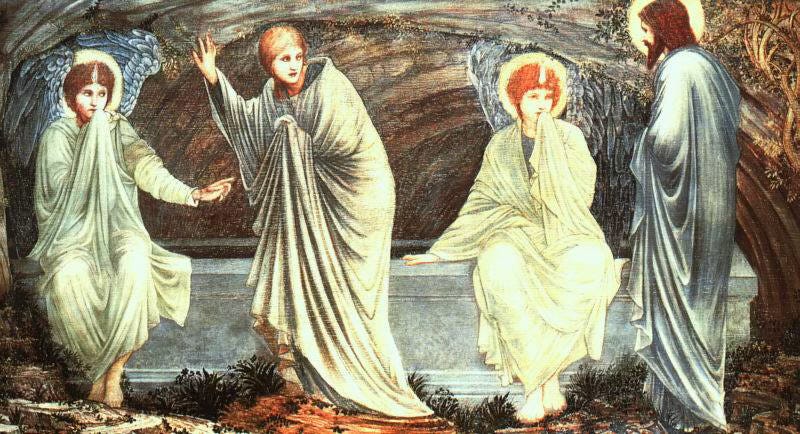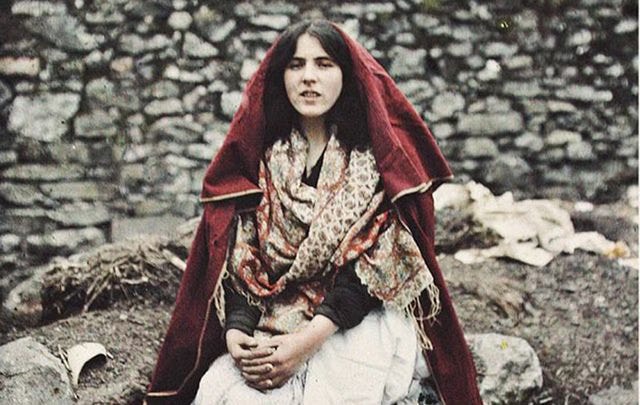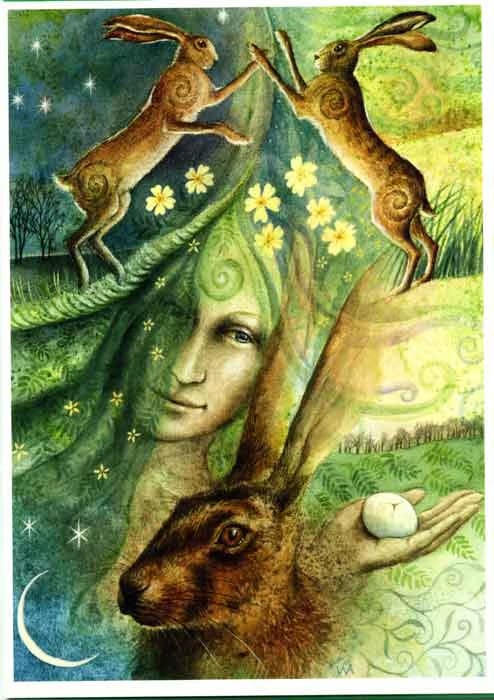Keen of the Three Marys
The folkloric secret magic of Irish Women at Easter
Today is the Black Sabbath in Christ traditions.
When Jesus descends into the Underworld.
Held in the womb-black-darkness of the tomb.
It is here that the Mary’s will gather to tend his rebirth.
With songs, herbs, prayers, and secret womb rites.
This feminine grief and rebirth midwife role is ancient.
It was also performed by the lamentations of the Priestesses of Isis, who mourned and keened, and tenderly re’membered the Green God Osiris after his own descent.
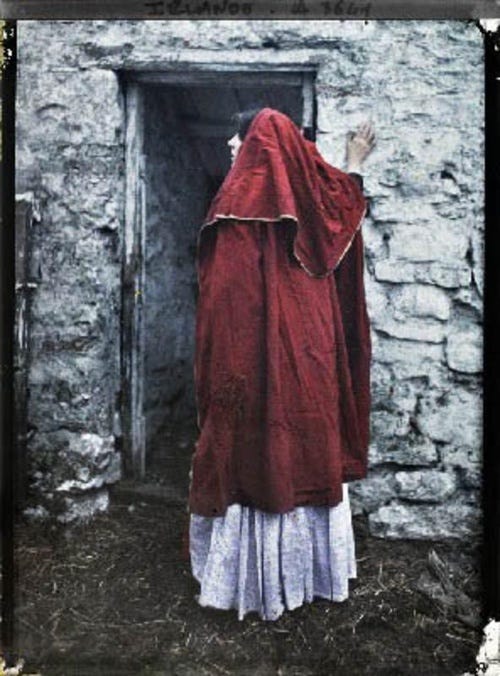
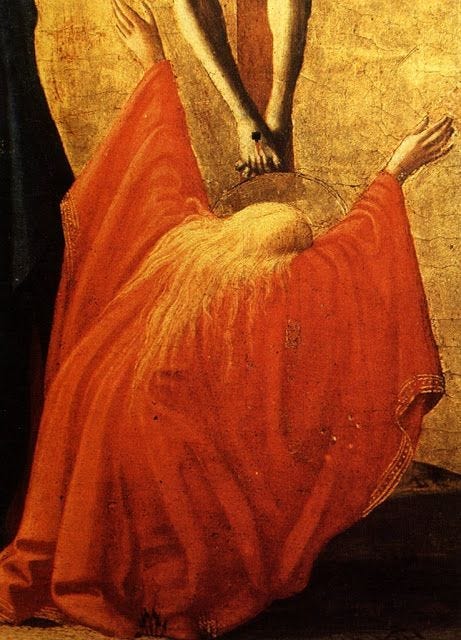
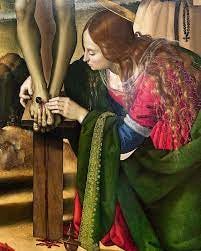

In Ireland the Keening women take up the rites of ancient Priestesses and perform the magical Otherworldly songs for Jesus, so that he can find his way back through hell.
When I studied the Irish Keening traditions with the Elder Dr Mary McLaughlin, I was transfixed to learn about the Keening traditions for Jesus, and how one strand of ancient Irish tradition of magical shamanic women who work for the pagan ‘Fairy Woman’ (The Banshee) started to braid with Catholic Christian traditions at easter.
Cleverly, around a thousand years ago, someone remarked on the terrible omission that Jesus did not have a Keen dedicated to him, and so a Keen was born - and from that moment on, the Keening tradition strolled, almost brazenly, into male tradition.
Not quite though, apparently it stopped right outside the church doors. Women could not perform the Keen inside church on Saturday, and so a folkish, magical, Magdalene women’s tradition sprung up, where women would gather round the hearth of their kitchens and homes, after church service on Saturday, for their own private mourning rites, singing the Keen of the Three Marys together in weeping devotion to Jesus.
This would have been sung in the mothertongue of Gaelic as “Caoineadh na dTrí Muire” - punctuated with the haunting cries of Ochone o! Ochone o! the guttural wailing mourning cry of womb grief, known to women across the world instinctively.
In the Keen, Mother Mary sings….
Is that my child
who I weened in my arms and nourished?
Alas and alack
Listen, little mother,
do not be sorrowful
Alas and alack
My love, big is your burden,
let your mother help you carry it
Alas and alack
Little mother, we each must
carry our own cross
Alas and alack
Oh how much is hidden underneath that old feminine cloak of the Mary’s Keen.
All the losses of women…the grief of Magdalene…of the mother….of the world.
On this day, women were given a special kind of permission to gather in the name of the new faith, carrying the song magic of the old faith, and grieve and keen together.
The tomb is the womb, the darkness is the mother of initiation who births us out to the light. It is a story and a motif as old as time, as old as birth, as old as the womb.
The Keen was believed to facilitate the resurrection into the new place of identity.
Without the songs, the grief, the women boldy praising and keening with the savage magic of their throats, stood at the cross, the soul could not reach the other side.
This is true in feminine magic traditions across the world in rites of resurrection.
Listen to my podcast on the Irish Keen Tradition with Dr Mary McLaughlin here:
(Paid subscribers, please scroll down for the video version of this interview)
Remembering the Easters of my Motherland - what I wrote last year….
What a strange day this is for me. I remember this time in my childhood as a magical world of food, ritual and crafting. Making pancakes on Shrove Tuesday, the brass bands walking through the streets and everyone carrying green fronds on Palm Sunday. Crafting the easter bonnets and decorative egg displays, leading up to the final initiation – more chocolate easter eggs on Sunday than you could possibly eat in one day. Everyone headed out to Hope Valley and Mam Tor, to take the sacraments offered in the local pubs, and often the many cars were lined up in stuck traffic.
In the background was Songs of Praise and men talking in serious voices and wearing long white frocks and black-trim glasses, as easter bunnies hopped around in glee and magical mischief. In England, where I was from, Easter was always about celebration, food, feasting, a turnpike of time that announced the incoming of Spring.
In Ireland the women gathered on the Black Sabbath, on Saturday, to Keen for “Our Lad” – singing the Caoineadh na dTrí Mhuire, the Keening of the Three Marys. This ritual happened at home, by the hearth, performed by the women – and was frowned upon in church. This was a moment they touched noses with Mother Mary in resonance and kinship, and keened alongside her for all their own mother losses.
(Here is the Keen of the Three Marys by Mary McLaughlin, who I learned it from)
Across the moors and dales of the old ways, the Hare or Rabbit was the deity of the magic of women and of womb-craft and fertility. It was also a wily trickster spirit.
I’ve come to deeply appreciate this interweaving of two worlds, of two stories, of two traditions that meet for a clandestine knees up. It’s true: myths really do mate.
Later on, I learned another magical twist to this tale, of a fallen woman with long wild hair and a smart mouth, who walked at dawn along a high ridge with the other Mary magicians, carrying lanterns in the darkness, a light infused with the first rays of sun and a luminous fading moon. They walked in procession down to the cave mouth, and gathered inside a dark tomb in a circle, with their tinctures and balms and anointing oils in small jars and cups and poultices, priestesses of the plant mysteries. With Angels present, they tended to that which was ready to be reborn and became the Mistresses of the Resurrection. In some tellings, the cave is empty and dark like the void, and the mystery unfolds in the garden, where two lovers of magic meet again.
In Womb Awakening we recount the story that Magdalene visited Rome to do a bit of her own feminine egg magic: “The tradition of the “magical eggs” that were deeply connected with Goddesses such as Oestra, Astarte, and Inanna were continued in the legends of Mary Magdalene. It is told that following Jesus’s death, she was invited to a banquet given by Emperor Tiberius Caesar. When she met him she held a white egg in her hand and proclaimed, “Christ is risen!” Caesar laughed and said that this was as likely as the egg turning red. Before he finished speaking, the egg magically turned bright red. Magdalene then declared, “Christ is risen, for Jesus has burst forth from the tomb.” Today, many Eastern Orthodox Christians end the Easter service by sharing bright red eggs and proclaiming to each other “Christ is risen.”
Eggs are used in Mexican tradition to perform limpias, which clear and renew the body. Eggs have been used in magical practice across many traditions, and are a contained womb world that we can touch, feel, perceive and nourish or cleanse with.
I’m open to all the stories, listening intently as if an old fairytale is being spelled out to me. I take them very seriously, but never quite literally. God forbid we let our thinking minds lead the way and try and make a practical recipe out of strange magical soup.
Whatever this day means to you, whether it’s the regenerative plants rising from the cracked winter soils, or the magical feminine egg cracking open with new life, or the door of the tomb cracking open to receive the new light into a holy man, I wish you the magic wand of resurrection. May your rabbit nose twitch with new possibilities.
I do believe that underneath all the layers, there is something of this mystery that speaks to a deep truth of life, and that we can rebirth. Dark becomes light again.
Video Interview with Dr Mary McLaughlin for paid subscribers.
Not quite as tasty as giving you a chocolate egg, but a close second hopefully :)



